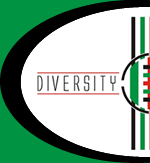|
You are encouraged to link, pass along to others, and/or reprint
these articles electronically or on paper, as long as the following
credit line is used: © Copyright Tracy Brown, www.DiversityTrends.com.
Measuring Effectiveness of Diversity Efforts
©2006, Tracy Brown & Diversity Trends LLC - Download this Article as PDF
The Question
A client recently asked me, “How have other companies measured the effectiveness of their diversity efforts? This question comes up frequently and I wondered what you have seen in your work as approaches that worked. Any insight you have to share would be appreciated.”
Current Trends
The question made me think about current practices and trends related to metrics within diversity strategies. Some of my thoughts are included below.
-
The majority of companies are still primarily using AA/EEO type data and measuring recruitment and retention figures for employees in the protected identity groups. This is not a bad thing . . . but it doesn't speak to the broader issues (or identity groups) included in the definition of diversity.
-
There is a growing trend to utilize data related to employee perceptions reported in their annual or biannual employee audit/survey. If the company has included specific questions that relate to the environment, the culture and/or managerial fairness this can be helpful. It's even more helpful if the data is sorted by ethnicity, gender and/or age (although many organizations don't sort their survey data because their attorneys have told them it will create a liability if they are ever involved in a discrimination suit)
-
Almost all of the initiatives that connect compensation to diversity-related results are tied into the recruitment/retention numbers. But a few are linked to new business development results and/or increases in supplier diversity. (Note: these are still focused on the identity groups targeted in EEO because that is the data that is available.) And a tiny number of organizations are linking bonus pay with incremental improvement in employee survey or customer survey scores.
-
A Fortune 50 company I am familiar with recently revamped their performance management system for all non-exempt employees. As part of their goal-setting process every professional staff member must include at least one diversity-focused goal. In the first year of doing this the majority of the goals set were related to communication skills or other 'soft' skills; but a growing percentage are related to sales targets, developing relationships with external groups that could drive business results and participating in associations that expand one's network in previously ignored ways.
-
A Fortune 100 technology company uses their affinity groups to help them track and measure effectiveness. The affinity groups are charged with conducting interviews and including the data -- plus recommendations for action -- in their annual report to the President of the company. They generate qualitative measures based on number of interviews and focus groups in different categories but also have developed qualitative targets based on responses to specific questions.
-
And a large hospital system is in the process of implementing a strategy that will include 30 diversity-related training modules that range from 60-minutes to 3-hours in length. Employees will be required to complete a specified number of hours of training each year . . . and managers will be held accountable for compliance. They will have a quantitative measure in the number of hours employees participate in training, and over time will have a qualitative measure related to patient and employee survey data.
The Four Cs
The approach I use when helping clients develop metrics always includes the following:
-
Combining quantitative and qualitative data to get deeper insights.
-
Customizing the metrics to reflect what is important in your organization's culture, your business results and your industry.
-
Collaborating in both traditional and nontraditional ways to acquire information, allow for innovation and activate integration throughout the business.
-
Communicating both expectations and accomplishments in a predetermined format on a predetermined schedule.
And I try to insure that metrics are not established only to highlight problem areas, but are also established to provide a way to reward consistent and sustained performance over time.
Helpful Resources
If you are working on this issue within your diversity initiative here are some additional resources to consider:
-
Any of the books by Ed Hubbard, but especially "Measuring Diversity Effectiveness" and "The Diversity Scorecard." http://www.hubbardnhubbardinc.com/Booktapes.htm
-
Craig Clayton, from Houston, has developed a model for measuring diversity effectiveness that has great potential (Diversity Earnings per Share). www.thespartacusgroup.com
-
Vince Cramer's book, Cramer's Cube, is really good for figuring out how to get diversity to work within teams . . . resulting in metrics that apply to business results for specific project teams or intact work groups. www.cramerscube.com
Download this Article as PDF
_______________
Tracy Brown (www.TracyBrown.com) is the author of “71 Ways to Demonstrate Commitment to Diversity” and 5 other books. She is President of Diversity Trends LLC (www.DiversityTrends.com) and can be reached at 1.800.290.5631
|


